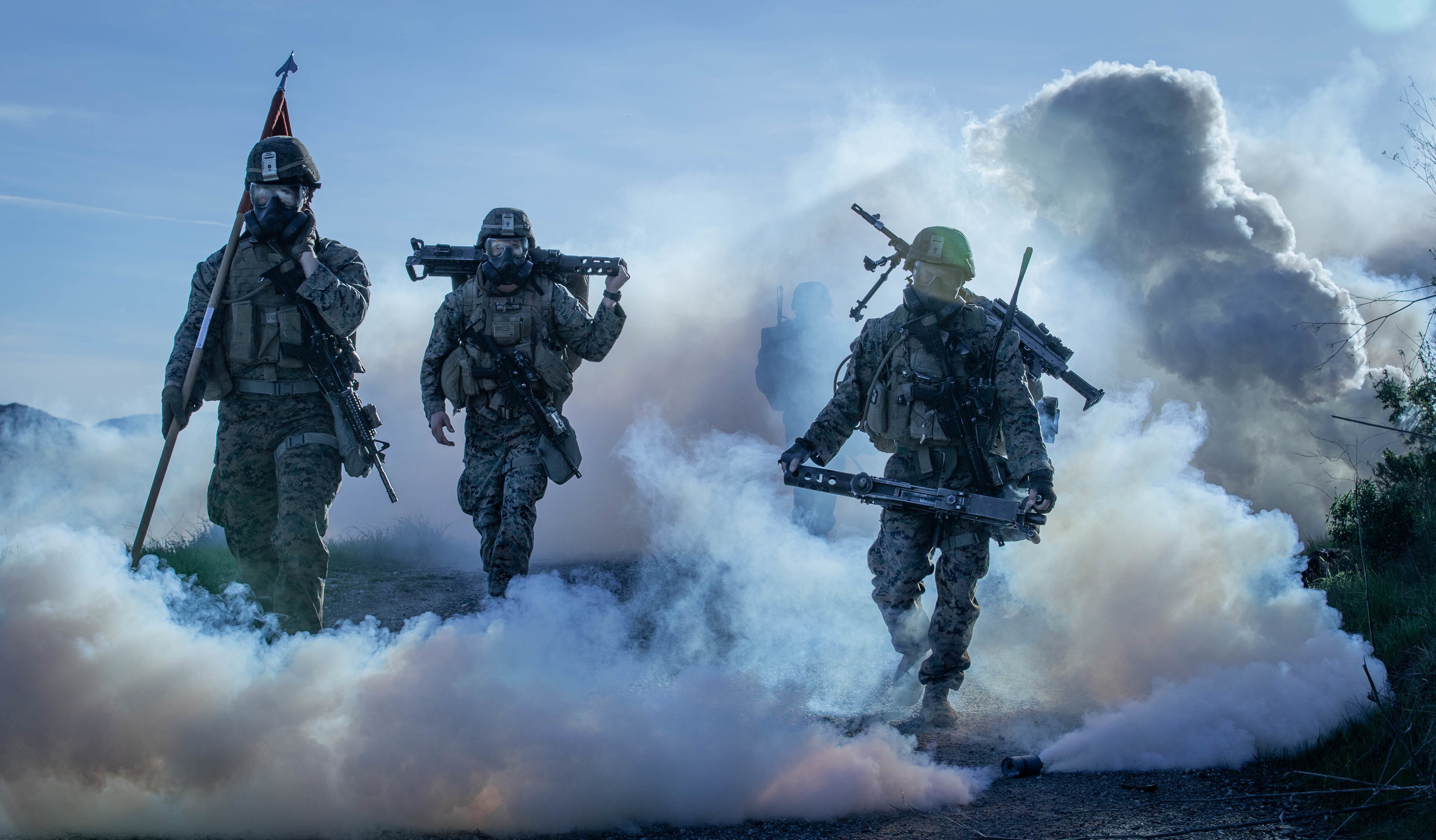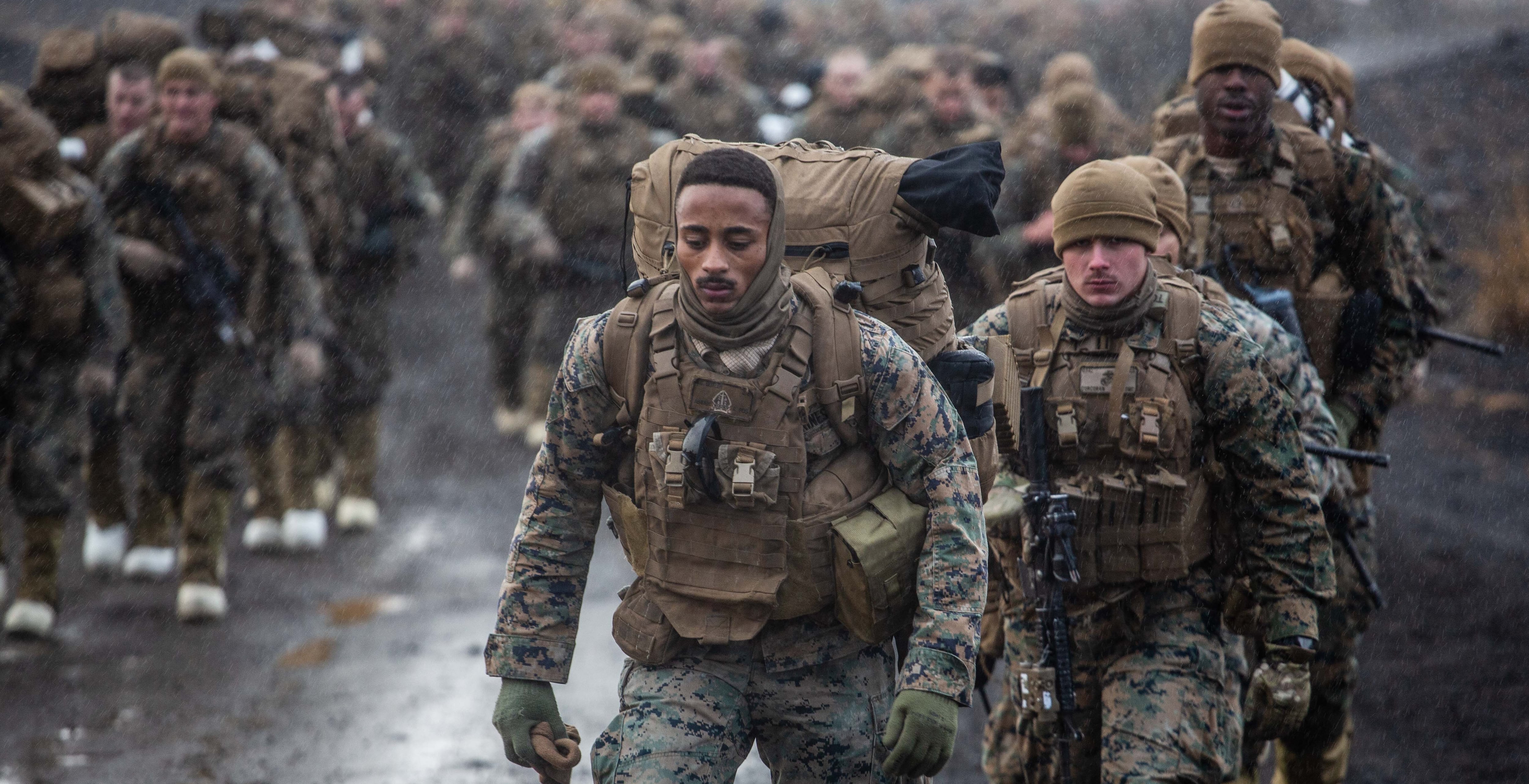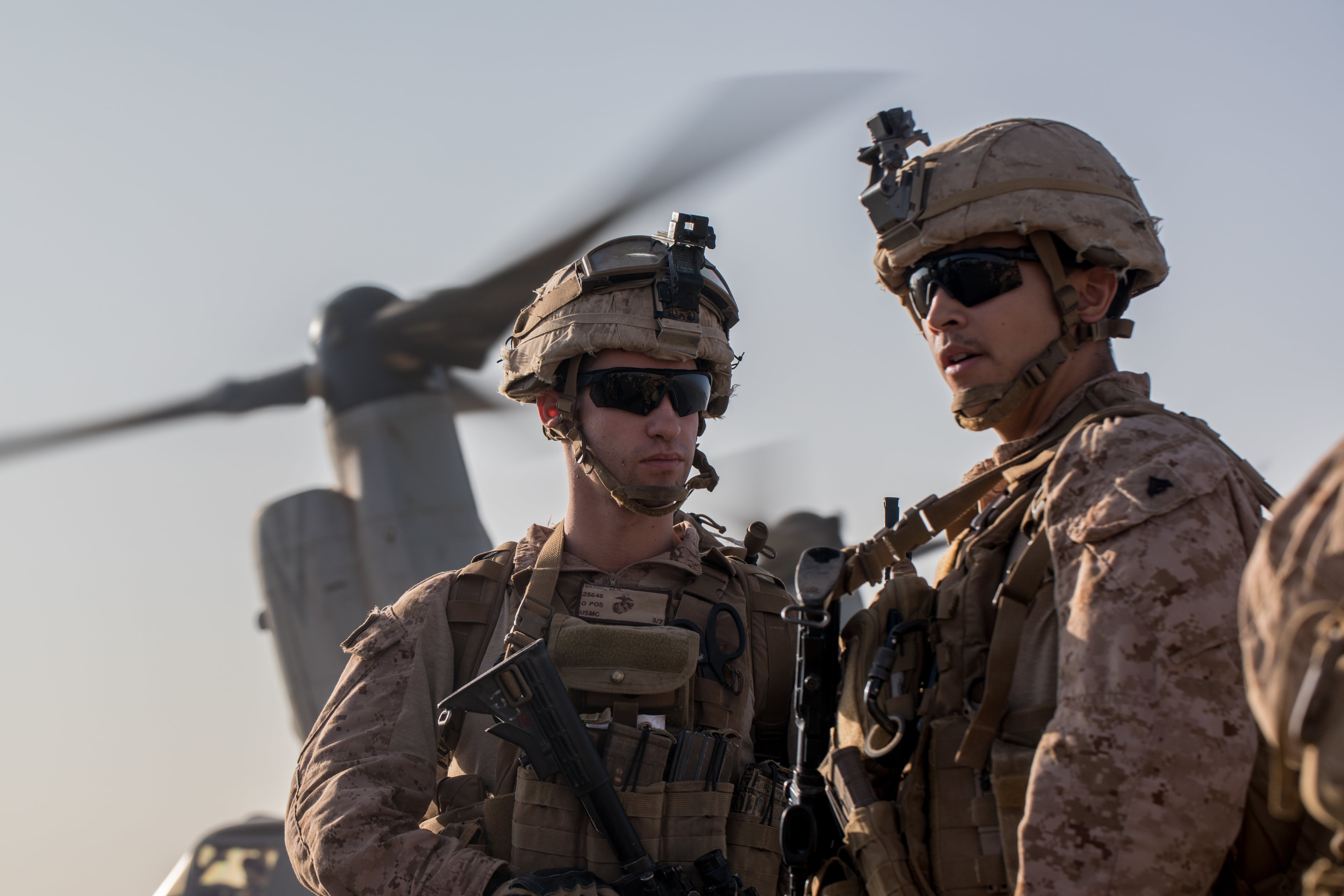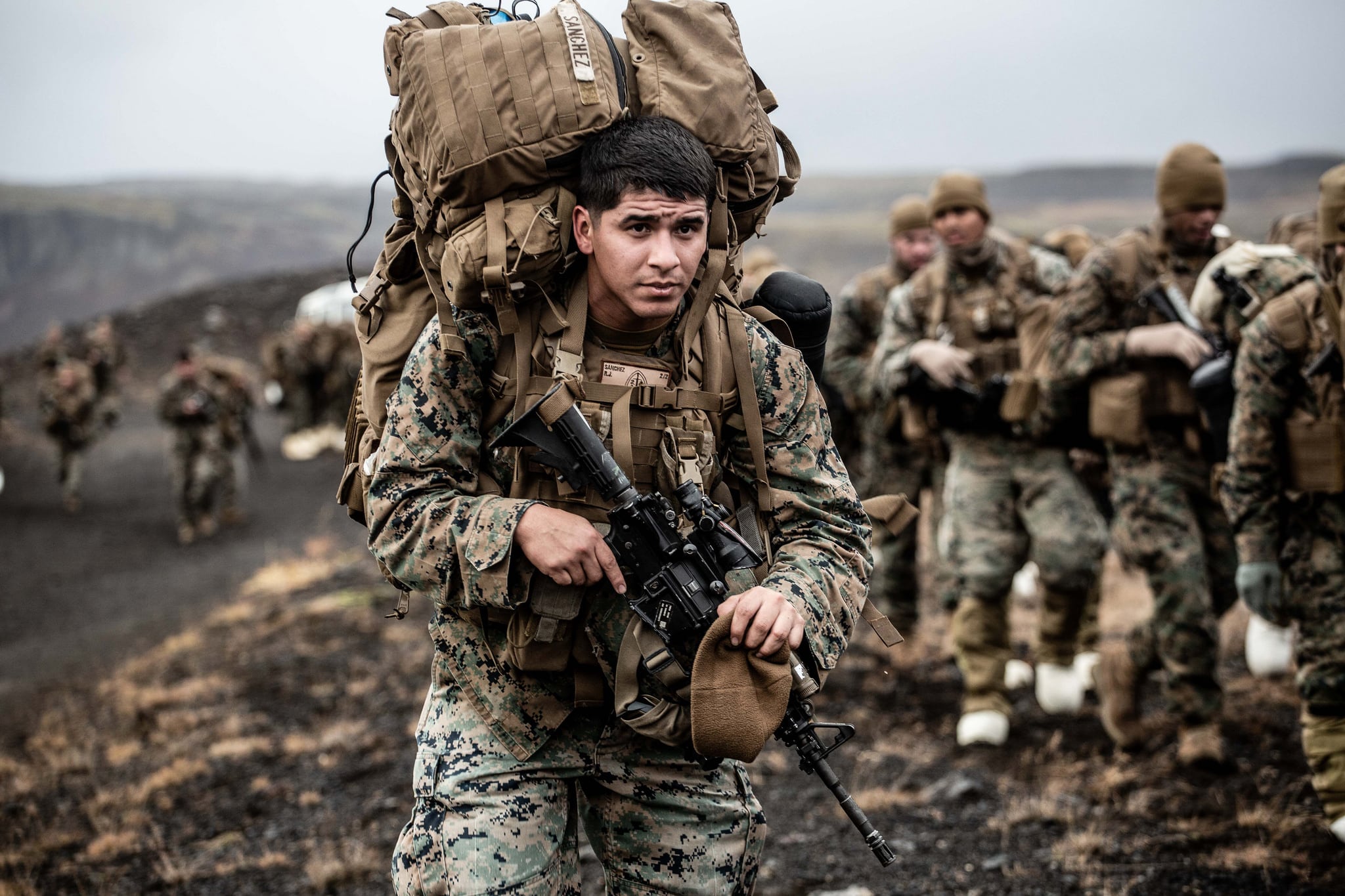The weight being humped by grunts into a firefight with a sophisticated adversary like Russia or China could be the difference between mission success or going home in a body bag, according to one Marine officer’s award-winning research.
Marine Capt. Courtney Thompson said computer simulations she ran showed that just adding 15 pounds to the “bare essential” fighting load carried by Marines resulted in an additional casualty on the battlefield when Marines were pitted against competent shooters.
The Corps’ fighting load varies between 43 to 62 pounds depending on the level of body armor a Marine wears. Military body armor protection ranges from level II to IV. Thompson’s simulations were run with level II body armor — protection capable of stopping a 9 mm round. The weight range includes a carried weapon.
She told Marine Corps Times in an interview that the results of the simulations were “eye opening," especially in light of a 2017 government watchdog reported that detailed Marines and soldiers were carrying between 117 pounds to 119 pounds on average.
RELATED

When she ran the simulations and added more weight “casualties just went up,” Thompson said. And “the better the [enemy] shooter got, the more the difference in weight mattered."
In a near-peer fight, Thompson said, Marines will need to move faster on the battlefield to survive and win.
“The slower they are, the higher the chance they have of getting hit," she said.
But it’s not just about reducing a Marine’s exposure time to being shot, smaller weight loads aid in more precise shooting and quicker target engagement times.
A 2018 report from Washington D.C.-based think tank Center for a New American Security, explained that heavy combat loads “not only slows movement and increases fatigue” but decrease “situational awareness and shooting response times.”
Moreover, a 2007 report from Naval Research Advisory Committee on Marine combat loads recommended an assault load of just 50 pounds.
As the Corps focuses on the near-peer fight, the weight carried by Marines into battle is a topic that will need to be front and center for Marine commanders, Thompson said.
Thompson’s research, which won the Military Operations Research Society Stephen A. Tisdale Thesis Award at the Naval Postgraduate School in Monterey, California, has the attention of officials at the Marine Corps Warfighting Laboratory — where the Corps has been exploring ways to boost combat power while also reducing the weight burden on grunts. Marine Corps Times has reached out to the Marine Corps Warfighting Laboratory for comments on this research.
Marine Corps Systems Command said its “Gruntworks” team spoke with Thompson about her research. The team handles the integration of equipment for Marine rifle squads.
Thompson, a combat engineer, said she came up with the idea after seeing how “gassed” her Marines got during training as a result of operations tempo and weight.
“I thought if I could quantify weight in terms of casualties and probability of mission success, that’s what the Marine Corps understands,” she said.
Thompson’s computer simulations relied on Australian human subject data and infantry demographics supplied by headquarters Marine Corps.
The Australian data was used because of the Australian Defence Department’s rigorous study on its tiered body armor system, Thompson explained.
The Marine infantry data included physical fitness and marksmanship. The individual Marines within the simulated 13-man rifle squads “represented the average for that rank for all 0311s [Marine rifleman] in the Marine Corps,” she said.
Thompson said she ran the simulations nearly a million times.

Thompson’s research showed that reducing the weight burden carried by grunts could save lives and win battles.
But she didn’t make any prescriptive adjustments to the Corps’ combat gear load outs. She told Marine Corps Times that she didn’t want to “limit” a battlefield commander’s decision-making.
The Corps’ various fighting loads are broken down in its infantry training and readiness manual into four different groups, fighting load, assault load, approach march load and sustainment load.
The load type is dependent on the mission at hand. Thompson’s research was aimed at the fighting and assault loads.
The fighting and assault loads include combat gear for the “immediate mission” and the “actual conduct of the assault,” respectively, according to the Corps’ infantry manual.
The assault load weight varies between 58 pounds and 70 pounds based on level of body armor. The weight range includes a weapon being carried. The training and readiness manual excludes the weight of a weapon in its gear break down.
RELATED

Thompson isn’t calling for particular pieces of gear to be thrown off the packing list, but she said commanders should throw the entire list in a pack, wear it, and “see if it is a reasonable amount of weight.”
The Corps is already making a number of changes to reduce weight. Some of those include a new lightweight helmet, lighter body armor for counterinsurgency conflicts and polymer ammunition.
But Marines also are packing on weight with new tech like tablets and drones, which have been dished out to rifle squads.
At the end of the day, Marine commanders have a delicate balance of weighing risk verse capability, and it wont be easy for commanders to forgo pieces of equipment on a mission to lighten packs, Thompson explained.
A commander “can’t prove the lives they saved” from taking a particular action, Thompson said.
Shawn Snow is the senior reporter for Marine Corps Times and a Marine Corps veteran.




